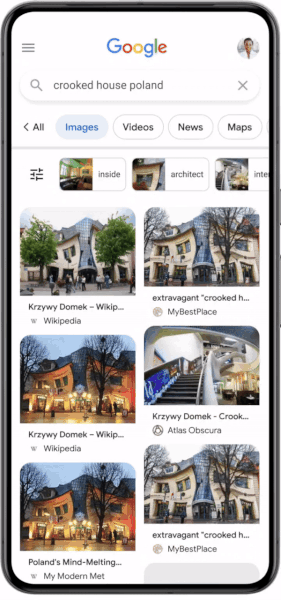Google makes verifying facts and images on the web easier
"About this image" and "About this page" are now available in 40 more languages worldwide.

What you need to know
- April 2 is International Fact-Checking Day, and Google is celebrating it by expanding existing features and debuting new ones.
- "About this image" and "About this page" in Google Search are now available in 40 more languages worldwide.
- Fact Check Explorer is exiting beta, and will serve as a way for journalists and other fact-checkers to view compilations of previous fact-checks concerning a given topic.
April Fools' Day is over, and ironically, April 2 brings International Fact-Checking Day. If you wished there was a way to figure out whether all the April Fools' Day pranks you saw online were legit or fake, you're in luck. To recognize International Fact-Checking Day, Google is expanding the reach of some of its most useful tools in Google Search for verifying facts, images, and sources. In addition, Google today announced that its Fact Check Explorer is exiting beta and will be widely available.
About this image and About this page aren't new features, but they are now available in 40 more languages globally. These tools are built right into Google Search, so users can quickly and easily find out more information about a result. For example, if you open an image's detail menu in Search and tap the About this image option, you'll be able to learn more about an image and where it came from. Specifically, Google says that About this image can list the following types of information about an image in Search:
- The history of an image
- How the image is used and described by other sites
- The metadata attached to an image
The hope is that About this page info might help you discern whether an image is real or fake. This information could reveal whether an image was AI-generated or came from an untrustworthy source.

Similarly, About this page and About this result will tell you more about a given website before you decide to click on a Google Search result. This could reveal whether the site is trustworthy, if it is believed to be biased in some way, and who owns it. Google pulls from Wikipedia's description of a website and other mentions of the site across the web to curate the About the source result.

Google will continue to show articles from fact-checking sources in Google Search results. However, it is also making a specialized tool for media members and fact-checkers publicly available. While the Fact Check Explorer was previously available in beta, it is now exiting beta and available today on Google's Fact Check Tools website.
Essentially, the Fact Check Explorer serves as a hub for fact-check content on the web. When you search for a fact check in Google Search, the results may be cluttered with unrelated or untrustworthy content. By comparison, the Fact Check Explorer specifically includes only fact-check articles from trusted sources and independent organizations worldwide. Fact Check Explorer also works for images, and entering an image URL can quickly reveal whether it has been included in a prior investigation.
All of these tools and features are available starting today, so you can try them out immediately in Google Search.
Be an expert in 5 minutes
Get the latest news from Android Central, your trusted companion in the world of Android

Brady is a tech journalist for Android Central, with a focus on news, phones, tablets, audio, wearables, and software. He has spent the last three years reporting and commenting on all things related to consumer technology for various publications. Brady graduated from St. John's University with a bachelor's degree in journalism. His work has been published in XDA, Android Police, Tech Advisor, iMore, Screen Rant, and Android Headlines. When he isn't experimenting with the latest tech, you can find Brady running or watching Big East basketball.
You must confirm your public display name before commenting
Please logout and then login again, you will then be prompted to enter your display name.
